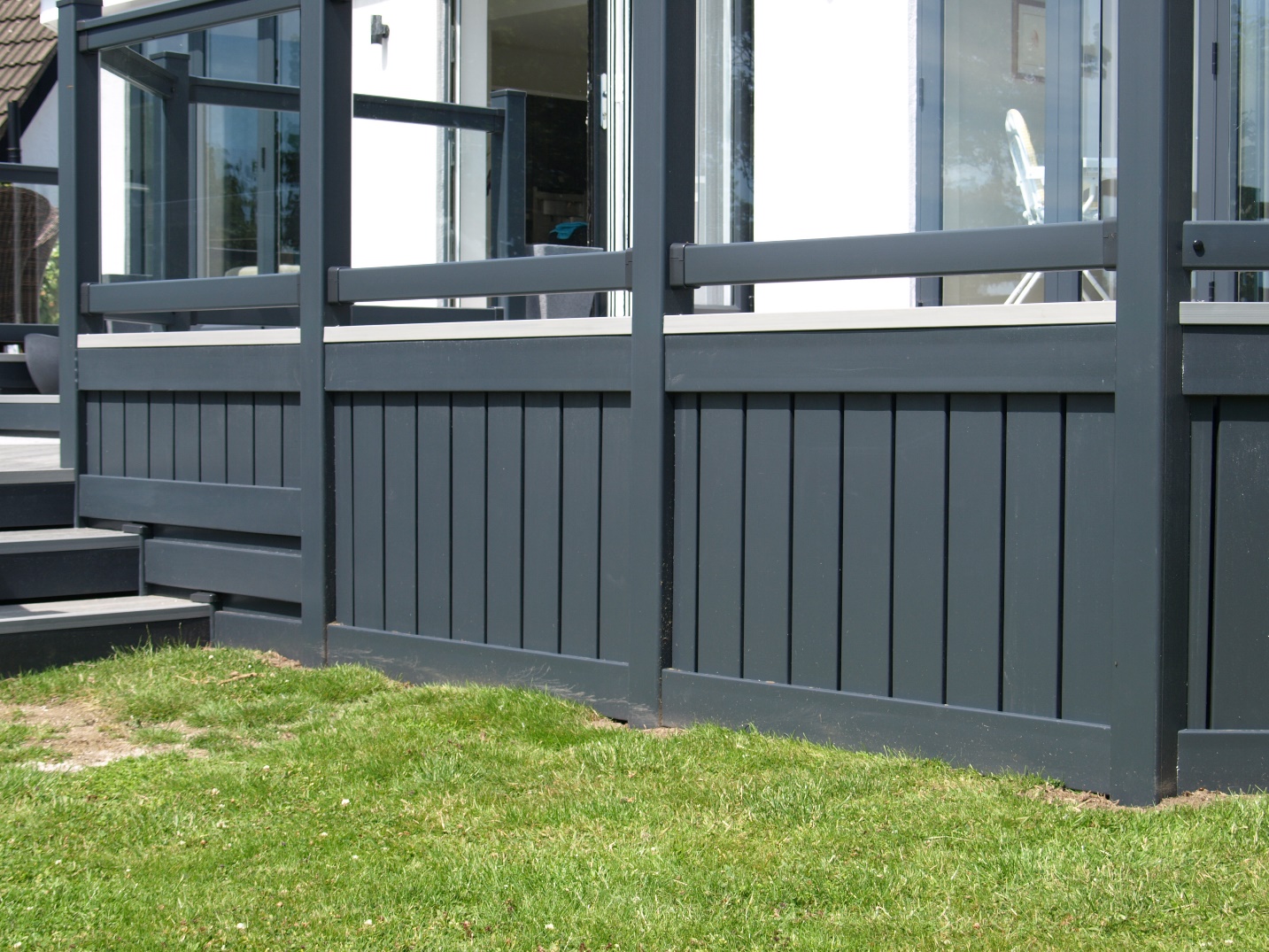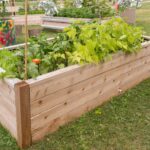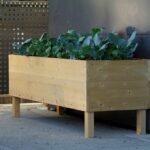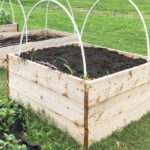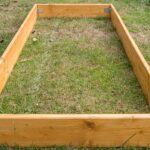Raised beds are an incredibly easy way to add a vegetable or flower patch to your garden. They also ensure an excellent harvest because they give you total control over the soil, protect your plants from floods and foot traffic, and ward off small animals. But how much do they cost?
A raised garden kit usually ranges between $100 and $200. However, if you’re planning on building the beds from scratch, the cost will be more than $200. Keep in mind that the total cost of a raised garden bed varies according to its size, quality, location, and materials.
You can either build raised garden beds yourself or hire a carpenter to do the job for you. Now let’s look at how much raised garden beds cost, why they’re so expensive, and what you can do to reduce the cost, so you can properly budget for this project.
How Much Do Raised Garden Beds Cost?

Raised garden bed kits usually range from $100 to $200. Even if you build the entire thing yourself, it will cost more than $200. Keep in mind that whether you hire a professional, use a kit, or construct the beds from scratch, they’ll be more expensive than traditional in-ground gardens.
It’s also important to note that the project’s total cost will vary depending on its size, materials, quality, and location. For example, a small wooden bed on completely flat land will be much cheaper than a large stone-framed raised bed on bumpy terrain.
To better understand where these $200 come from, here’s a complete breakdown of the cost of raised garden beds:
Labor
If you don’t think you have the right DIY skills to build a raised garden bed, you may have to hire a professional. Brickmasons usually charge around $40 to $80 per hour, while carpenters charge approximately $35 to $95 per hour.
Keep in mind that landscaping labor costs will differ according to the professional’s specialty and the scale of your project.
Soil
The cost of raised garden bed soil can quickly add up. In fact, soil is one of the biggest expenses of building a raised garden bed. For instance, let’s say you want to build a garden bed that’s four feet long and four feet wide.
You’ll then need to fill it 1.5 feet deep with soil, which translates to around 24 cubic feet (4x4x1.5) of soil. On average, a bag of raised garden soil costs $10 and only includes 1.5 cubic feet of soil.
So, to fill this garden bed, you’ll need 16 bags, which comes to a total of $160 per garden bed – and that’s just for the soil!
It’s also important to remember that the deeper the garden bed, the more bags of soil you’ll need. Keep in mind that you’ll also have to add organic matter and compost to give your plants a nutrient boost.
Materials
Building materials like brick and natural stone can also increase the cost of your raised garden bed. Building materials cost around $18 per square foot but remember that some may not be available at local stores, so you might need to buy them directly from a contractor.
Corten steel is the cheapest for a retaining wall, costing around $11 per square foot, whereas natural stone is the most expensive and costs around $40 per square foot.
You’ll also need to purchase wood boards for the frames of your garden beds—a 2×6 inch fir board costs around $5. So, if you’re building a 4x4x1.5 foot garden bed, you’ll need three boards per side, which brings the total to 12 boards per garden bed.
With $5 per board, you’ll need to spend $60 on wood. Remember that this isn’t premium hardwood from a redwood or cedar tree, so you’ll have to treat it occasionally with sealer or stain.
Tools
You can’t build a proper garden bed without having a few tools on hand. While you won’t need all the tools listed below, you’ll probably need most of them. To help you better determine the total cost, the list includes the average prices of the tools as well:
- Staples: $8 per box
- Garden trowel, like this one from Fiskars (on Amazon): $9
- Hardware cloth: $12 (10×2 feet)
- Rubber mallet: $12
- Work gloves, like this pair from Ironclad (on Amazon): $14
- Dust mask: $14 per box
- Safety glasses: $15
- Tape measure: $18
- Garden rake, like this one from Homimp (on Amazon): $20
- Manual stapler gun: $23
- Deck screws: $23 per box
- Garden shovel, like this one from Fiskars (on Amazon): $24
- Hearing protection: $25
- Garden hose: $37
- Spading fork, like this one from Truper (on Amazon): $50
- Power drill: $80
- Circular saw, like this one from DeWalt (on Amazon): $145
Why are Raised Garden Beds So Expensive?
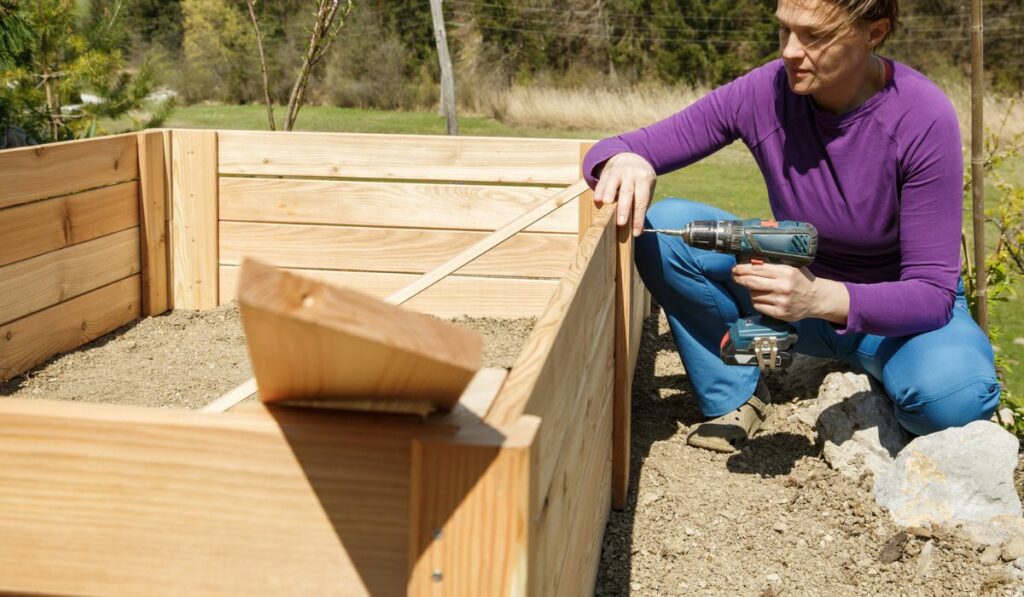
Whether you buy a kit or build them yourself, raised garden beds are costly simply because there are a lot of materials involved in their construction. They’re also high in demand, which further drives up their price. This high demand is mainly because of two reasons.
First, as older people retire and spend more time gardening, they opt for raised garden beds because of better accessibility. For instance, they may be disabled, confined to a wheelchair, or have back or knee pain, in which case, it’s just better and easier to have raised garden beds.
Secondly, as younger people start buying homes, they consider adding a lush garden. Since you can buy and put together a raised garden bed kit, the project is also extremely popular among DIYers.
Because of this high demand, people sell raised garden bed kits at a higher price. This is particularly true for “designer” raised garden bed kits, which elevate the look of your backyard.
What is the Cheapest Way to Make Raised Beds?
If you don’t want to spend so much money, you can easily make cheap raised beds with just a bit of time, patience, and creativity. Along with being a fun DIY project, you can also completely customize these raised beds to suit your needs better:
Use a Steel Bin
A steel bin is one of the easiest ways to make a raised garden bed. While these bins are usually used as stock tubs, you can use them to give your backyard a more polished and rustic look.
Since all your plants will be well-contained in the bins, they’ll also be easy to weed and care for.
Try a Bathtub
You’ll probably be able to find an old bathtub at a junkyard or your local restoration store. These tubs are almost indestructible, making excellent raised garden beds.
You can add gravel to the base of the tub for drainage, fill it with cardboard and sticks, and finally, top it off with nutrient-rich soil for your plants.
Opt for Stumps Instead of New Lumber
If you know someone who has recently cut down a tree, ask them if they’ll be willing to give you a few pieces of the truck. You can cut the trunk into disks and stack them on top of each other to make a garden barrier.
Alternatively, you can also turn the entire trunk horizontally with the help of a few friends and use that as a barrier.
Are Raised Garden Beds Worth it?
To determine whether raised garden beds are worth it and the right choice for you, we’ll first need to look at their advantages and disadvantages:
Pros
- Cleaner garden area.
- Longer growing season.
- Protects your plants from pests.
- Can be easily built anywhere.
- Better accessibility.
- Improved drainage.
- Plants require less weeding.
- Richer soil.
- Protects your plants from flooding.
Cons
- Soil dries out much faster.
- Costs more money and time to build.
- Wears out over time.
- More difficult to install irrigation systems.
- Less room for proper root growth.
- Difficult to change out the plants over time.
- Less sustainable and environment-friendly.
Raised gardens are perfect for those who are confident in their handiness skills and love a good, rewarding DIY project. Using a kit is straightforward, as the prefabricated garden beds usually come with very easy-to-follow instructions.
However, if you think an in-ground garden is more suitable for your needs, you should stay away from raised garden beds.
Raised beds also need regular maintenance, so if you think you won’t be able to take some time out of your busy day regularly, then it’s better to avoid them.

